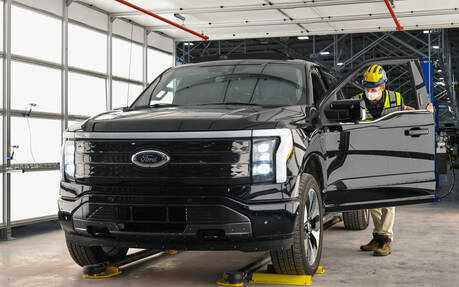Ford F-150 Lightning Production Nearly Doubling to Meet Demand
Facing stronger demand than initially planned, Ford last month stopped taking reservations for the fully electric F-150 Lightning to pave the way for factory orders, which will start this Thursday.
With nearly 200,000 reservations so far, even if just three quarters turned into actual sales, production would have been full for the first three years.
- Also: Ford F-150 Lightning Closing in on 200,000 Reservations
- Also: Pre-Production Ford F-150 Lightnings Ready to Hit the Road
But Ford has some great news: following the 15,000 F-150 Lightnings it plans to build in 2022 (production starts this spring) and 55,000 in 2023, the automaker says it will be able to produce 150,000 units by 2024 instead of 80,000 as previously announced.
Of course, all of this is conditional to suppliers ramping up production of their own—and Ford securing enough chips, as well.

Ford is implementing a wave-by-wave reservation process, with reservation holders being asked to watch for an invitation via email from Ford or to log into their Ford.ca account over the next few months. Those who don’t receive invitations to convert for the 2022 model year will have an opportunity to order a future model year vehicle in due course.
Base prices for Canada have already been announced, remember. The commercial-oriented Lightning Pro model starts at $58,000, while the retail variant (in XLT, Lariat and Platinum trim levels) starts at $68,000. Further details will be announced at a later date.

Including production of the E-Transit van and Mustang Mach-E crossover (the latter will triple to more than 200,000 units by 2023), Ford will have the global capacity to produce 600,000 electric vehicles annually within 24 months.
Incidentally, the Blue Oval is building the largest, most advanced and most efficient auto production facility in its 118-year history in Tennessee, where it will assemble next-generation F-Series electric pickups starting in 2025. Together with SK Innovation, Ford is also building three new battery plants (one in Tennessee and two in Kentucky) to power next-generation Ford and Lincoln EVs.
